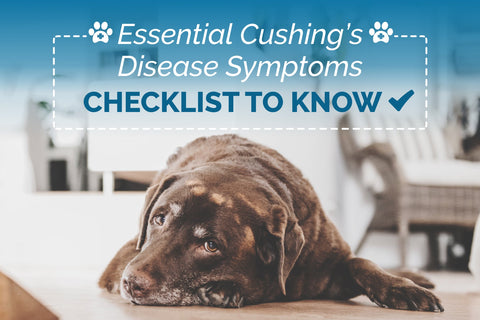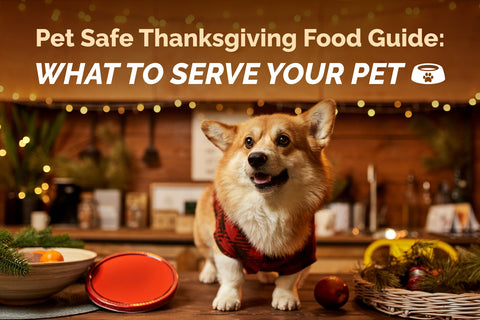

Anxiety in dogs can be a challenging and heart-wrenching problem for pet owners to tackle. Whether it's separation anxiety, noise sensitivity, or fear of new environments, an anxious dog can exhibit behaviors such as excessive barking, chewing, or trembling.
Fortunately, there are strategies to help calm an anxious dog, reinforcing a sense of security and well-being. Here are the five best ways to ease your furry friend's anxiety.
What Are The Symptoms Of Stress in Dogs?
There are many symptoms of stress in our furry friends, many of which may just seem normal for dog behavior but can be a much more serious cry for help. That is why it is important to know the symptoms of canine stress so we can help our dogs live a happy and relaxed life.
The most common symptoms for stress in dogs are:
- Diarrhea
- Constipation
- Digestive issues
- Isolation
- Increased Sleeping
- Aggression Towards People
- Aggression Towards Other Dogs
5 Proven Ways of Calming Your Anxious Dog
1. Create a Safe Space
Creating a safe space can help your dog retreat and feel secure when they're stressed. This area could be a specific room, crate, or corner with their favorite toys, bed, and blankets.
How to Implement:
- Identify a quiet place away from the hustle and bustle of the home.
- Fill it with familiar items like their bed, toys, and a piece of your clothing.
- Encourage your dog to use this space by leading them there during stressful times.
2. Utilize Calming Aids
Calming aids for dogs like pheromone diffusers, supplements, anxiety wraps, or calming music can soothe a stressed dog.
How to Implement:
- Investigate various calming aids and select what fits your dog's needs.
- Use pheromone diffusers to emit calming scents.
- Invest in an anxiety wrap or thunder-shirt that applies gentle, constant pressure.
- Play calming music specifically designed for dogs during stressful situations.
3. Implement Positive Reinforcement Training
Training through positive reinforcement builds confidence and helps a dog associate anxiety-inducing situations with positive outcomes.
How to Implement:
- Identify the triggers that cause anxiety.
- Gradually expose your dog to the trigger, rewarding calm behavior with treats or praise.
- Be patient and consistent, allowing the dog to adjust at their own pace.
4. Introduce a Consistent Routine
Dogs thrive on consistency. Having a stable routine can significantly reduce anxiety, especially in situations like separation anxiety.
How to Implement:
- Establish regular feeding, walking, and playtimes.
- Stick to the routine as closely as possible.
- Inform caregivers or pet sitters about the routine if you're away.
5. Consult with Professionals
Sometimes, professional assistance is needed for severe anxiety. This might include a professional dog trainer or a veterinarian who can recommend therapy or medication.
How to Implement:
- Seek a professional dog trainer who specializes in anxiety issues.
- Consult with your veterinarian for a thorough examination and recommendations.
- Consider therapy or medication as guided by the veterinarian or professional trainer.
What Are Some Additional Anxiety Relieving Techniques For Dogs?
You may find that your dog is suffering from anxiety, just like us humans do. It is important to try and minimize anxiety in your furry friends and help them like a happy and calm life. Below are some simple things that you can do to help your dog relieve stress.
- Animals are extremely sensitive to our energy. With this said, remaining calm and maintaining a low energy is one of the most helpful tactics to help your dog.
- Avoid moving frantically, making loud noises or yelling. Your pet is extremely vulnerable to loud sounds on a daily basis. A quiet and peaceful environment is best for your dog.
- Try to spend time with your dog doing things they enjoy such as taking a nice quiet walk, or cuddling up on the couch and petting them.
While trying to provide a safe and relaxed environment for your dog is always an effective tool at making your dog feel relaxed it may not always be enough. This is where Dog CBD, and its calming stress relieving benefits come into play.
CBD is a must for anxious or stressed dogs as it is so easily administered to your pet while on the go, or even at home. You no longer have to try and get your dog to swallow large harsh synthetic pills, leaving a bad taste and uncomfortable experience with you on their mind.
Understanding The Benefits Of CBD for Dog Anxiety
More and more pet owners today are realizing that synthetic drugs are not the only way to treat animals prone to stress from travel.
- This substance is found in cannabis or marijuana. It's not to be confused with THC or tetrahydrocannabinol, which is famous for the "high" in marijuana. CBD Oil for pets is the active ingredient in hemp that doesn't have psychoactive properties. It's more of a relaxation agent.
- CBD helps reduce symptoms of stressful situations, eases anxiety in high strung or nervous pets, supports stable, balanced function of brain and nervous system.
- Your dog can benefit from CBD by taking it on a regular basis, not just for treating stress related to uncomfortable travel. In fact, many families see a dramatic change in their pet's general happiness and stress on a daily basis when used regularly.
For many pet parents, the idea of giving their furry loved one a product that was derived from the cannabis plant might seem a bit outlandish and even dangerous. Even though CBD has been proven to help reduce stress, and help calm down those who take it.
Hopefully, after doing a bit of research on your own, you will feel more comfortable making the right choice for your canine. There is no reason for anyone to suffer from stress and anxiety if there is a natural, safe component that can help.
Wrapping Things Up
Anxiety in dogs is a multifaceted issue that requires patience, understanding, and often a combination of approaches. The five methods outlined above provide practical ways to calm an anxious dog, focusing on creating safety, consistency, positive associations, and professional guidance when needed.
Remember, every dog is unique, and what works best for one may not be suitable for another. Being attentive to your dog's specific needs and triggers, and working closely with professionals if needed, will help you develop a customized plan to alleviate anxiety in your dog and create a more peaceful and happy life for your four-legged friend.




